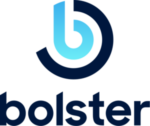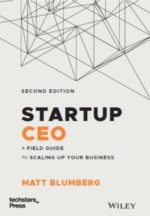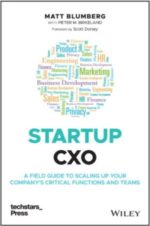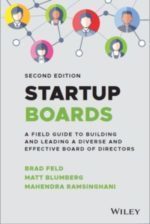This is the second post in the series…. the first one When to hire your first Chief People Officer is here). While all CXOs are important to a company, the Chief People Officer is the one role you don’t want to get wrong because People Ops impacts every facet of a company. If you hire the wrong people—even one wrong person—you’ll regret it, and so will everyone else in your company. If you short-change the onboarding process you’ll create tons of work for others in the company to answer questions, teach people the systems, and help them get up to speed quickly—not to mention the frustration of the new hire. And of course, if you or your employees do anything…
Category
Human Resources
When to Hire Your First Chief People Officer
(Post 1 of 4 in the series of Scaling CPO’s) In most startups, the HR function starts out as tactical, because you have to get people hired and paid, and while you might have a founder or early-stage employee who can do these things, often these tasks are frequently outsourced to a PEO. As the company grows, it probably in-sources payroll and benefits, hires a recruiter, and maybe has an HR Manager who handles the function. Depending on the number of roles you see being filled, the degree of specialization, or a host of other factors, an in-house team to handle the tactical aspects of HR makes a lot of sense. But at some point you may need to hire…
My Favorite Interview Question
I hosted a CEO roundtable dinner the other night, and someone in the group asked me what my favorite question was to ask in interviews. I kept thinking about something I read years ago, that the late legendary Zappos founder Tony Hsieh used to ask, “do you consider yourself a lucky person,” about which he said, “Lucky people approach the world with an open and optimistic mind that enables them to see unexpected opportunity more readily.“ That’s a good thing to find in a future team member of course, but the question is a little too indirect for me. My favorite question (ok, it’s a compound question) is to ask someone “What are you great at? What do you absolutely…
Book Short: The Subtle Art of Not Giving a F*ck
This was a catchy title I caught in our shared Kindle library at a moment when I wasn’t connected to wifi and had nothing to read. Thanks to Mariquita for buying it…it was a good read. The book is funny, irreverent, and deep. It speaks a lot about pain and failure and how those can help create resilience. It is also chock full of great anecdotes including a particularly memorable one about Pete Best, the original drummer for the Beatles who got fired by the rest of the band on the eve of their becoming famous. Here’s one particularly representative quote: Pain is an inextricable thread in the fabric of life, and to tear it out is not only impossible,…
Learning Loops
The last couple weeks, I’ve written about tools in the CEO toolbelt that I learned with my coach Marc years ago in a workshop called Action/Design — Inquiry vs. Advocacy, and The Ladder of Inference. The final post in this series is about Learning Loops (or Double Loop Learning if you prefer), popularized by Chris Argyris a couple decades ago. Here’s the graphic on it: What’s the tool in the CEO toolbelt here? It’s that every time you’re analyzing a result, you need to analyze it on two levels. Level 1 is the more obvious learning — “What happened…and what do I do next time to produce the same/a different result?” Level 2 is the less obvious learning — “Why…
Inquiry vs. Advocacy
My Grandpa Bill used to not want to talk about himself at dinner parties. When one of us asked him why one day, he said, “I already know what I have to say. What I don’t know, is what the other person has to say.” There are a few principles I learned years ago in a workshop that my coach Marc led for us called Action/Design. I’m going to try writing a few posts about them, and you can find some articles on them here. Inquiry vs. Advocacy is simple. Understand the balance of when you ask and listen vs. when you speak in a given conversation. Both are important tools in the CEO tool belt. My rule of thumb…
Bring People Along for The Ride, Part II of II
Last week, I wrote about Bringing People Along for The Ride by involving people in the process of ideating and creating change in your organization. That’s the most important thing you can do to make it easy for people to handle change. But what about the people you don’t or can’t bring along for the ride in that way? If you organization has more than 10 people in it, there will inevitably be people where you’re IMPOSING CHANGE ON THEM. And honestly, even people who are involved in designing change still have to live through its impact. Today’s post is about managing the actual impact. The best thing you can do as a leader in helping your organization navigate change…
Bring People Along for The Ride, Part I of II
One of the CEOs I mentor asked me the other day asked me this question: I need to start making my organization think differently – more like a startup that needs to scale and less like a project. People need to start doing more specific jobs and not swarm all over everything. How do I get people to “get” this without freaking out? Every CEO faces dilemmas like this all the time. One of my management mantras over the years has been, “You have to bring people along for the ride.” Fundamentally, that means two things. I’ll write about one of them here today and save the other for next week. First, bringing people along for the ride means you…
Grow or Die
My cofounder Cathy wrote a great post on the Bolster blog back in January called Procrastinating Executive Development, in which she talks about the fact that even executives who appreciate the value of professional development usually don’t get to it because they’re too busy or don’t realize how important it is. I see this every day with CEOs and founders. Cathy had a well phrased but somewhat gentle ask at the end of her post: My ask for all CEOs is this: give each of your executives the gift of feedback now, and hold each other accountable for continued growth and development to match the growth and development of your company. Let me put it in starker terms: Grow or Die….
It All Starts With Self-Awareness
If I had to pick one human trait that is the single most impactful in one’s ability to have positive and successful interpersonal relationships, there’s a hands-down winner: Self-Awareness. This is true no matter what kind of relationships you’re talking about — parent, manager, executive, friend, partner or spouse. Someone shared a framework with me years ago that helps explain why this is true, which I’ve been meaning to blog about for a long time. I found this image, which is close enough to the 2×2 that was once drawn for me on a whiteboard. The framework is at once incredibly simple and incredibly complex. Having true self-awareness and the ability to be reflective, to take in input and feedback,…
Book Short: Must-Read for CXOs
Lead Upwards: How Startup Joiners Can Impact New Ventures, Build Amazing Careers, and Inspire Great Teams, by Sarah E. Brown, is an amazing book – and one that fits really well with our Startup Revolution series, in particular our book Startup CXO. I kept thinking as I was reading it that it was the other side of the proverbial coin…that Startup CXO was about the details of each executive job in a company…but Sarah’s book is about the things common to ALL executive jobs – how to get them, how to succeed at them, essentially how to BE an executive. I read it front to back in a single day one weekend and loved it. Some of the most insightful…



